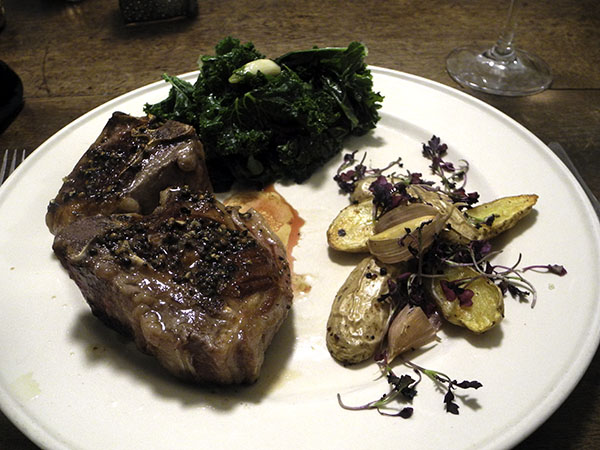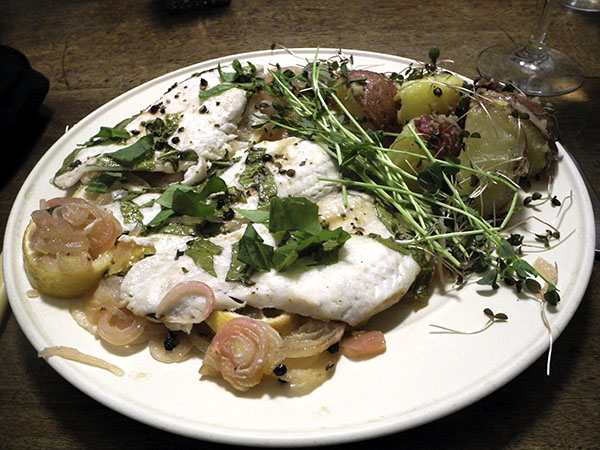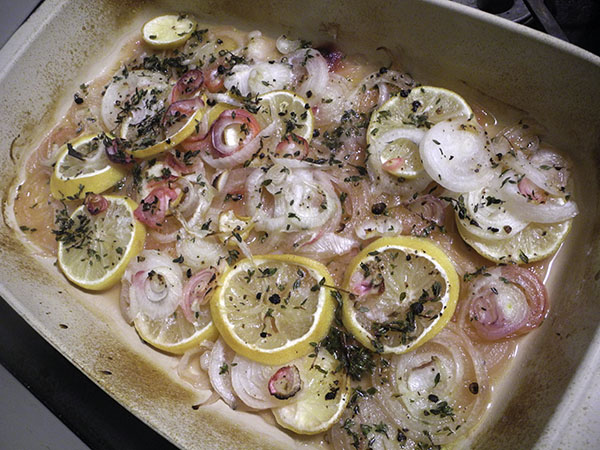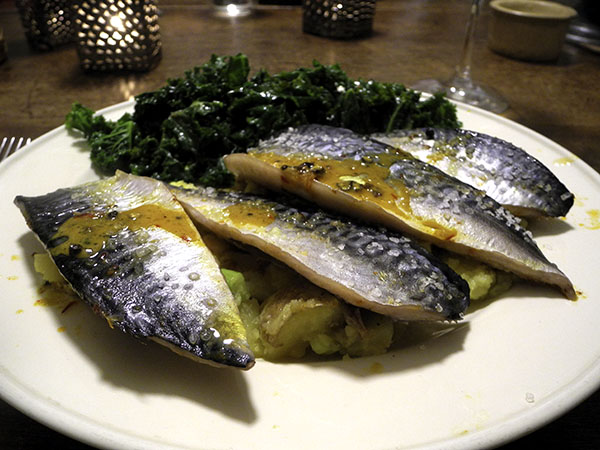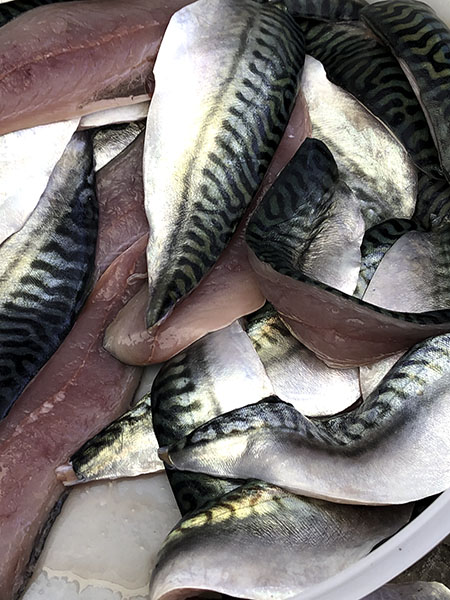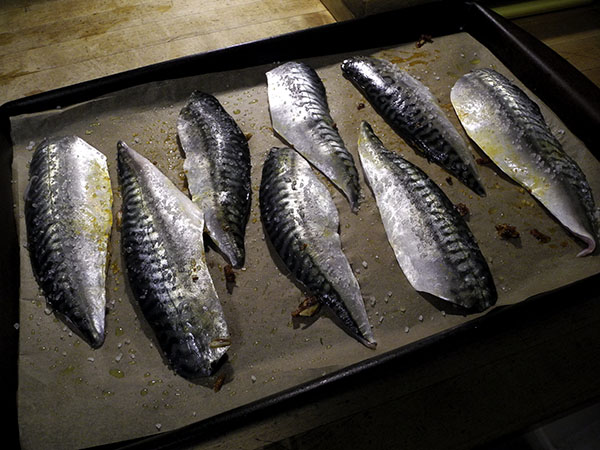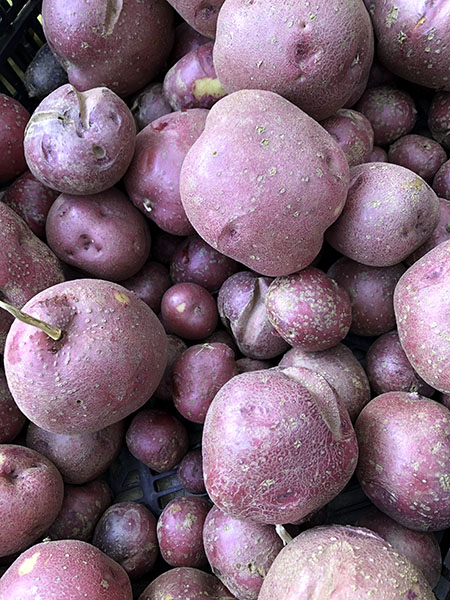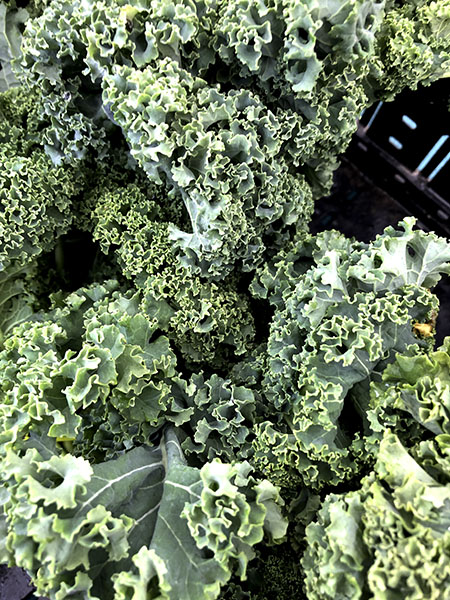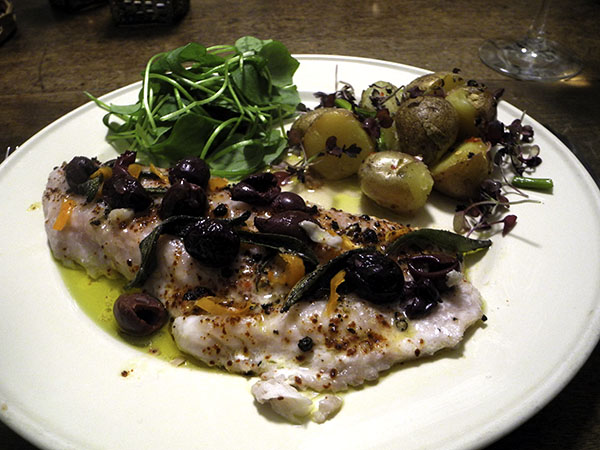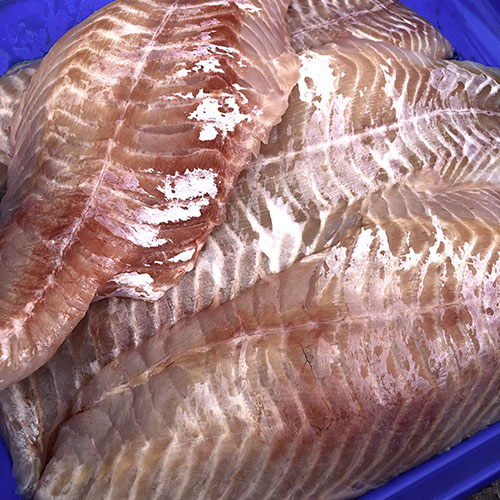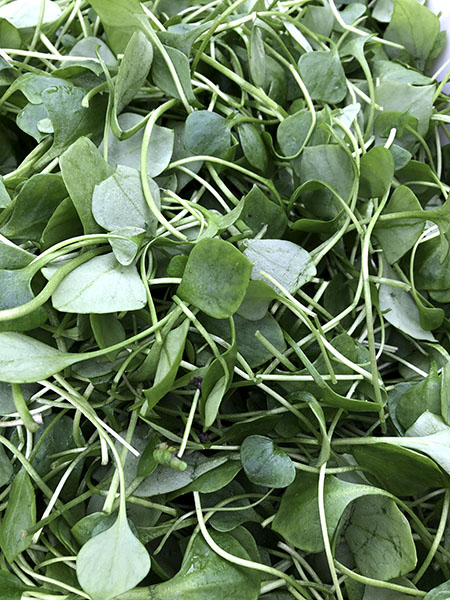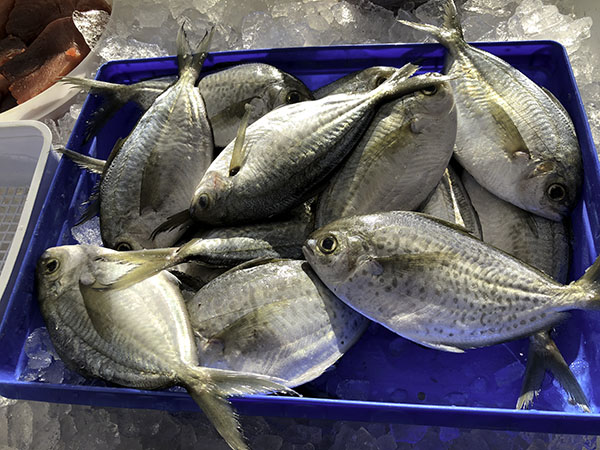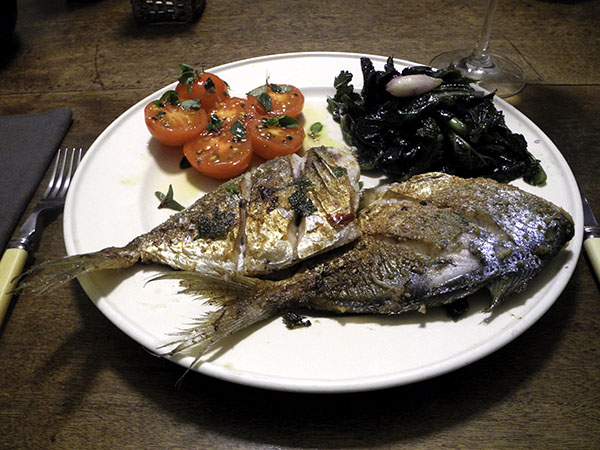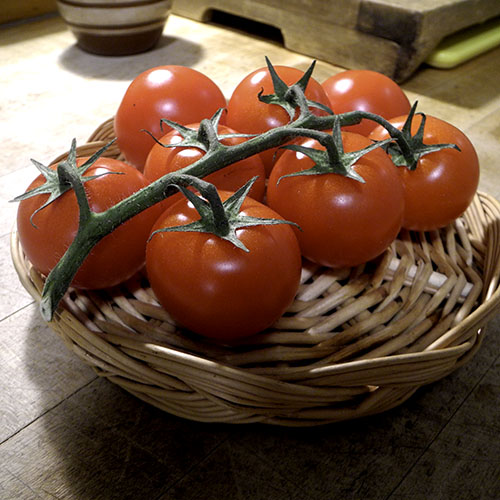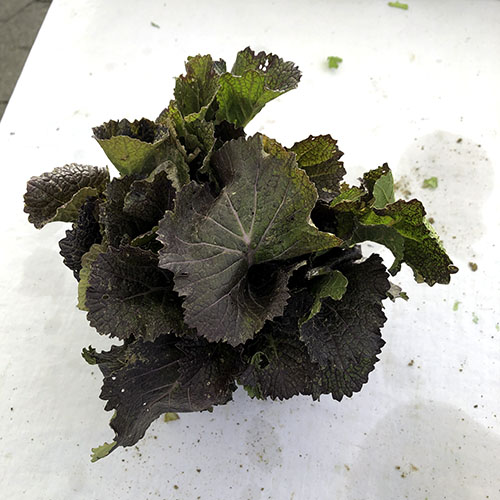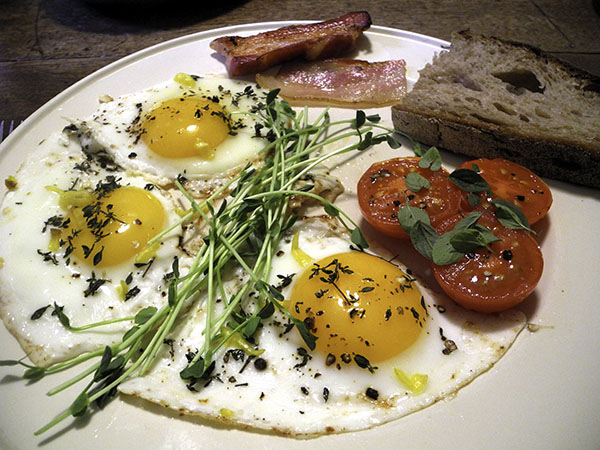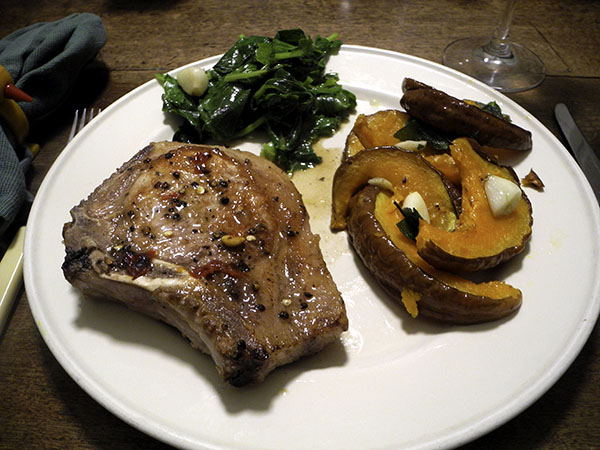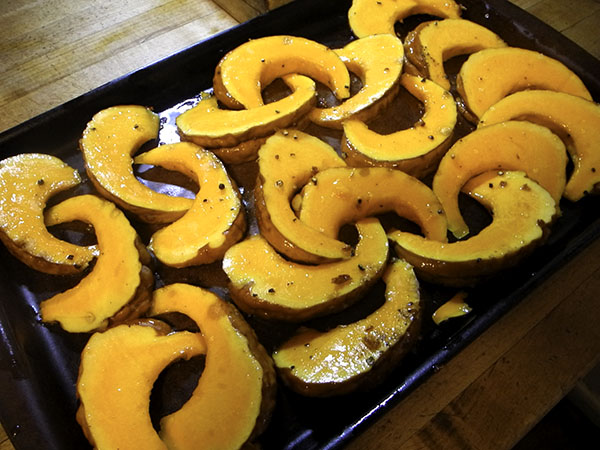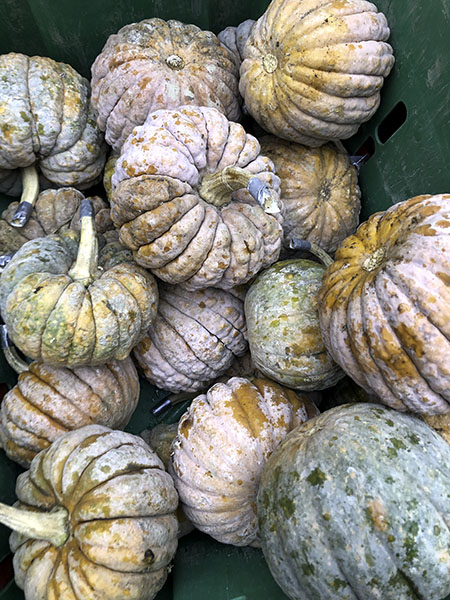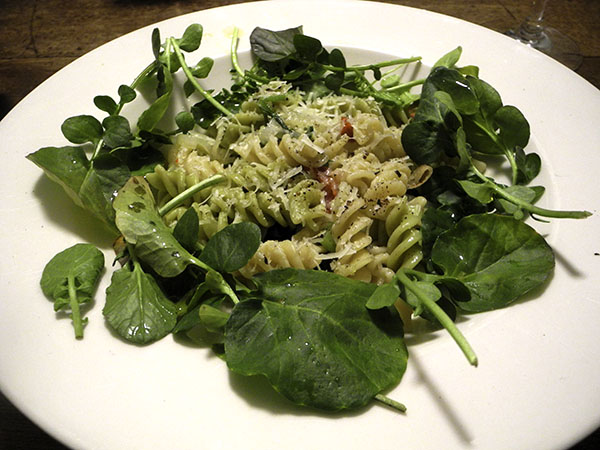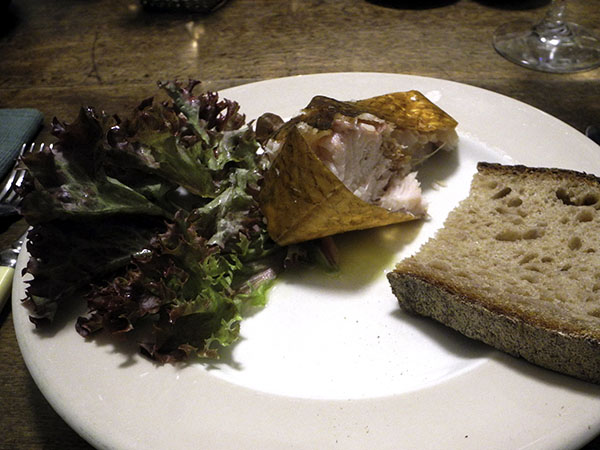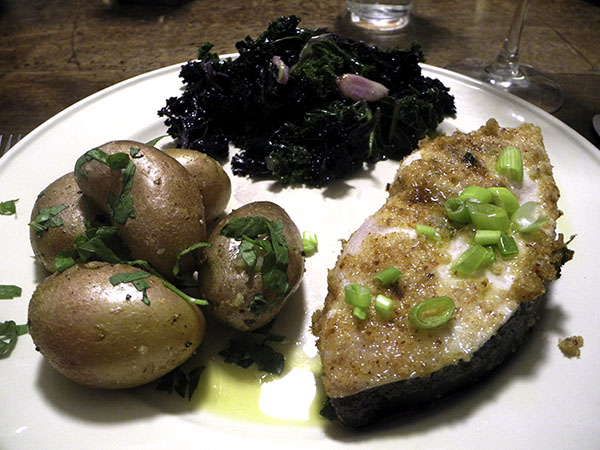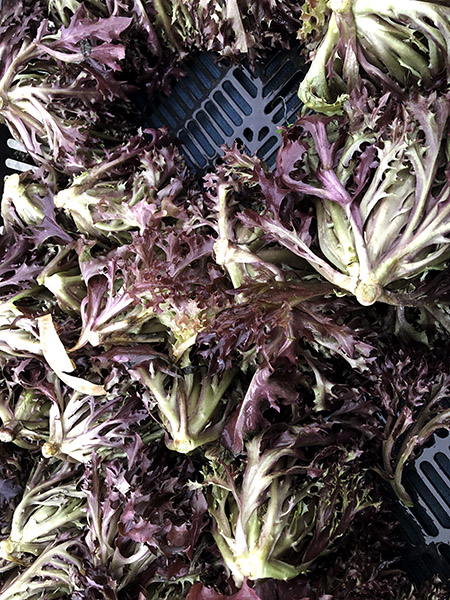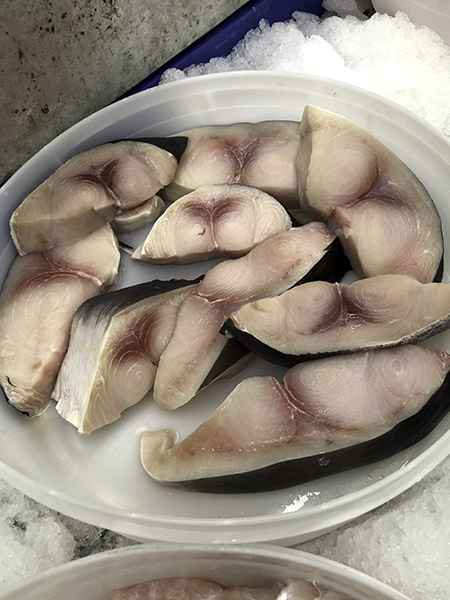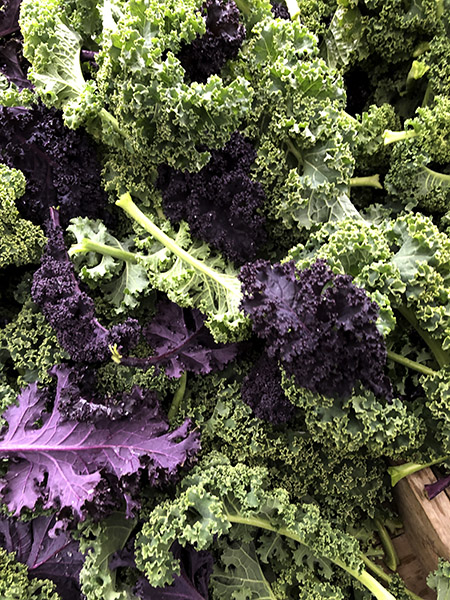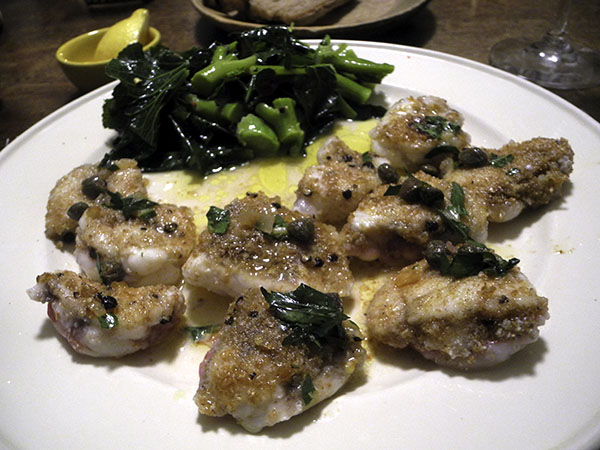
I’ve worked with this recipe twice before. It’s turned out differently each time, but each time it was terrific.
I think this one may be the closest to the original concept, and I did have fun with it. To begin with, I actually cut the monkfish into medallions this time, and I floured and cooked them on one side only, as instructed, probably for just a minute and a half in the pan, working fast to see that 17 pieces got in and then out within that narrow window, at which time they were just slightly underdone, like scallops, which makes great sense for this fish.
And I managed to restrain myself from the urge to toss in some flowers at the end.

Now it really was a first visit with gai lan, the vegetable we enjoyed with it. This Chinese broccoli is really, really delicious and I’m sure we’ll all be seeing more of each other, even through the winter (the farmer has high tunnels).
- the dish is called ‘monkfish with caper butter’, and I stayed pretty close to this great Florence Fabrikant recipe, starting off with 2 monkfish tails (17 ounces total) from P.E. & D.D. Seafood, which I sliced roughly into 1/2″ medallions, continuing with local Union Square Greenmarket-purchased whole wheat flour from The Blew family of Oak Grove Plantation in Pittstown, N.J. seasoned with sea salt, freshly ground black pepper, and ground mustard seed; Organic Valley ‘Cultured Pasture Butter’; a portion of a Camelot shallot from Quarton Farm; Sicilian salted capers, thoroughly rinsed; the juice of an organic lemon from Whole Foods Market; and chopped tarragon leaves from Stokes Farm
- slices of a She Wolf Bakery miche, to savor the juices of the fish and the greens
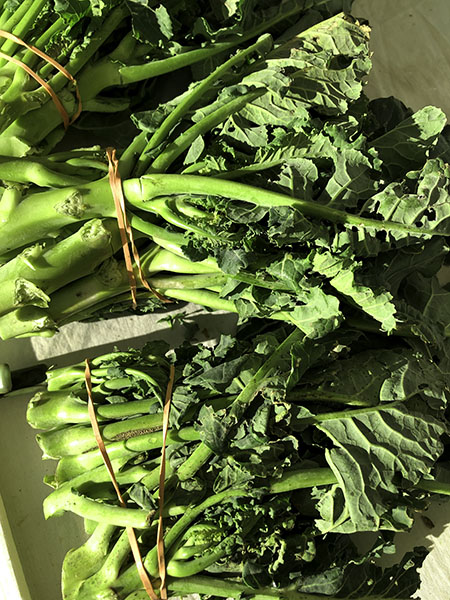
- one bunch of really wonderful “broccoli with leaves” from Lani’s Farm, layered with the cut stem sections on the bottom and the roughly-cut leaves on top inside an antique medium high-sided copper pot with a half inch of water in the bottom, covered with an antique copper universal lid, steamed for a few minutes, the water then entirely drained from the pot and the greens tossed, over a medium flame, with a little olive oil, sea salt, black pepper, and a little crushed ripe red dried shishito peppers (flavor, no heat), also from Lani’s Farm
- the wine was a California (Central Coast/Santa Ynez Valley) white, Rick Boyer Santa Ynez Valley Dry White Blend 2017, from Naked Wines
by Rick Boyer - the music was a recording of an excellent performance of Donizetti’s 1832 opera, ‘L’elisir D’amore’, with Sir Geraint Evans, Placido Domingo, Ileana Cotrubas, and Ingvar Wixell, John Pritchard conducting the Royal Opera House Covent Garden Orchestra
